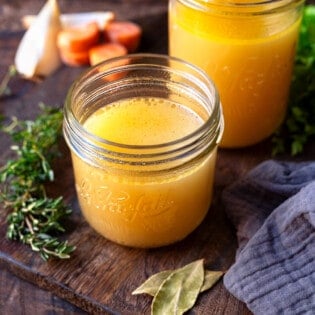
Soups and Stews
This umami-rich, intensely flavorful, and beautifully fragrant homemade vegetable broth takes a handful of aromatics and just 45 minutes on your stove. It’s delicious enough to sip solo, but endlessly handy to keep stocked for risottos, soups, rice, and more.
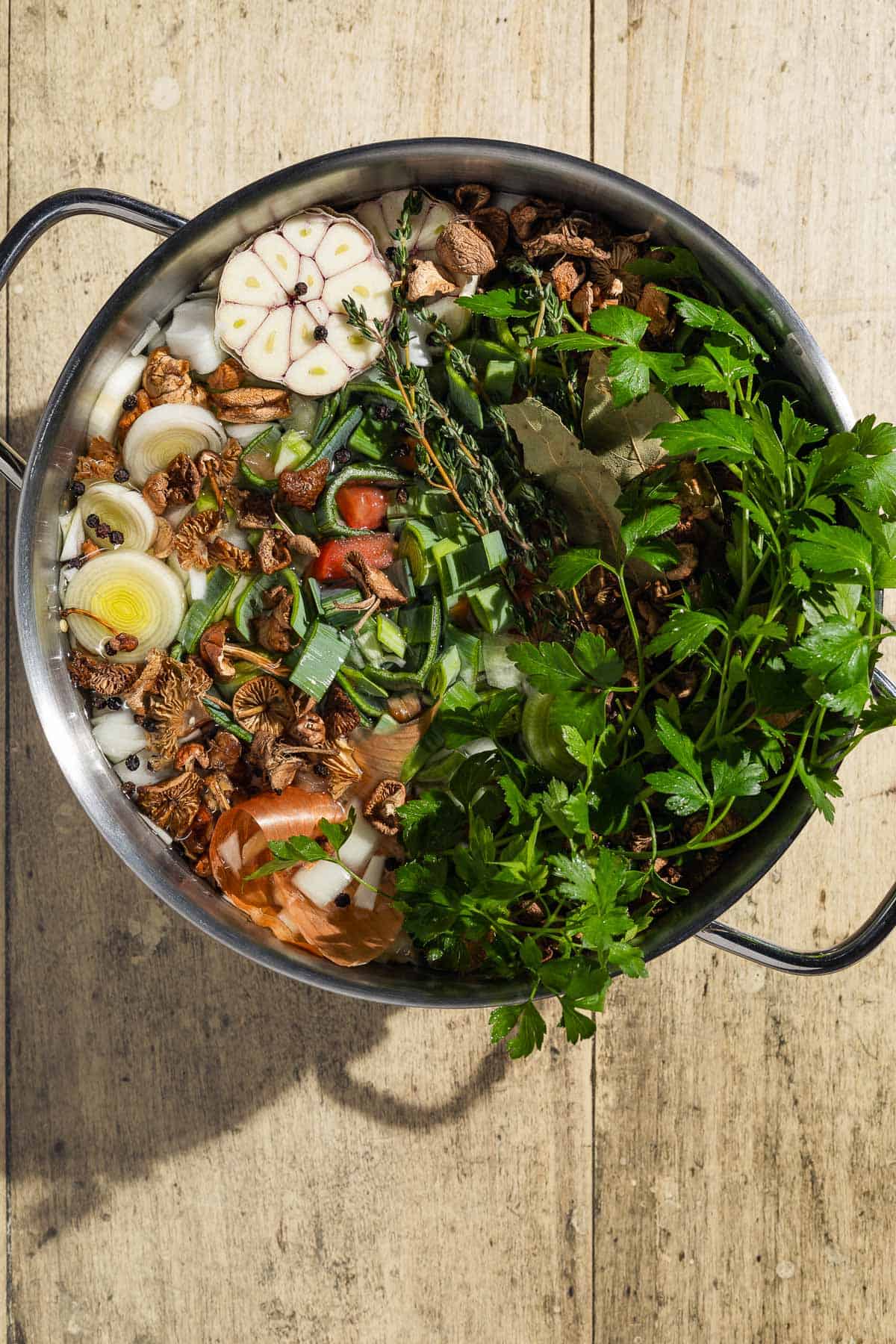
I always like to keep a stash of jars filled with homemade vegetable broth in my freezer. That way I can thaw as needed for soups, asparagus risotto, pan sauces, or just to sip on and warm up on a chilly afternoon.
I tend to make and use vegetable stock more often than chicken stock. I think it's more versatile, works with a larger variety of dishes, and is extra useful when I have vegetarian guests over. And while I often have odds and ends of vegetables leftover after cooking, I don't often have chicken carcasses lying around.
Those of us who make homemade stock always gush about how much better it is than store-bought. And it's true, both in terms of flavor and quality of ingredients, with less salt and no preservatives. But not everyone has the time to tend to a simmering pot for three hours. Luckily, vegetable stock requires much less time-it becomes incredibly flavorful in just 45 minutes.
In addition to the classic aromatic trio of onions, carrots, and celery, I use dried mushrooms and tomato for the base of my stock. Both add a rich umami flavor that you'd otherwise achieve from chicken or meat. Garlic, parsley, thyme, bay leaf, and black pepper perfume the broth for a complex flavor.
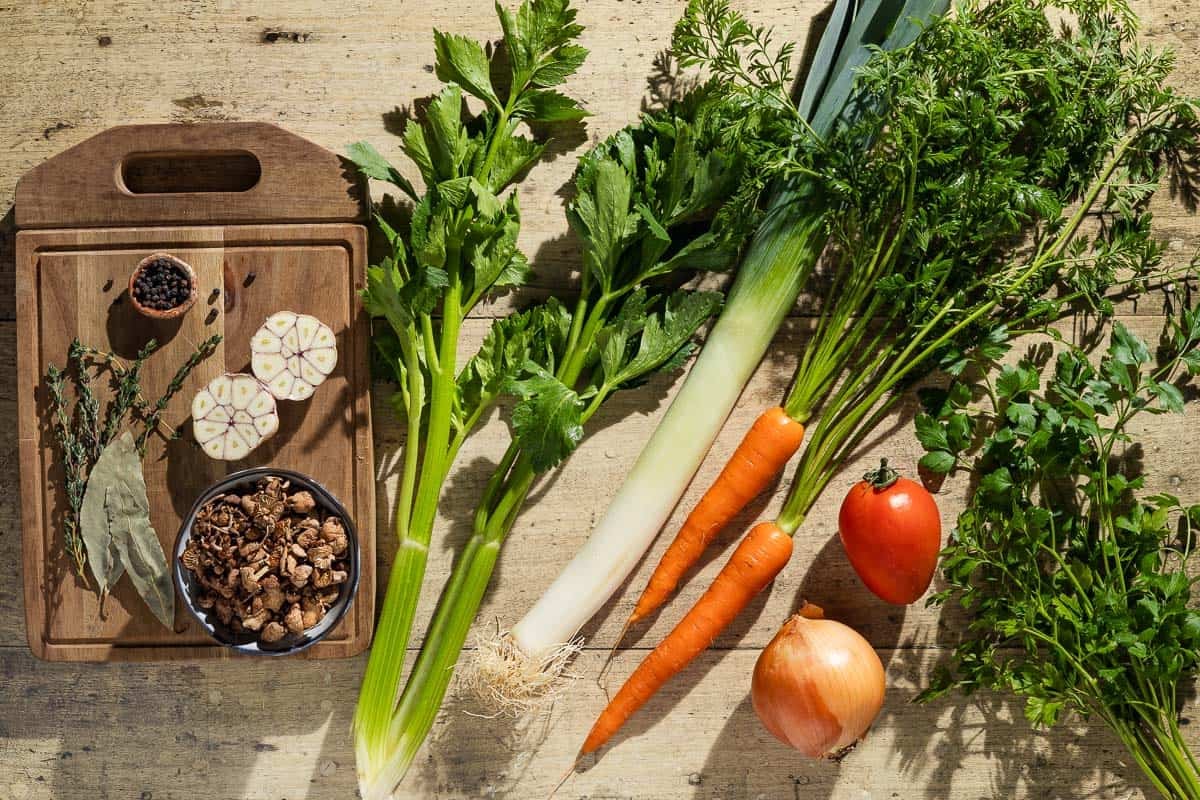
There is no difference between vegetable stock and broth and you can use them interchangeably. Larousse Gastronomique: The World's Greatest Culinary Encyclopedia, widely considered to be the gold standard for culinary definitions, defines stock as, "A flavored liquid base for making a sauce, stew or braised dish. In general, stocks are aromatic, but not salty, since they have to remain unseasoned until the sauce has been perfected."
This vegetable broth recipe fits the bill! And if your recipe calls for vegetable stock, this recipe will work perfectly in it.
Note: There is a slight difference between chicken stock, with stock being made from bones and broth being made from meat. But since this vegetable stock/broth is vegan you don't need to worry about which word you're using, or which version you use for your recipe.
Celery, carrots, leek, and onion form the aromatic base of this vegetable stock, and dried mushrooms are the powerhouse ingredient, providing savoriness, richness, and color.
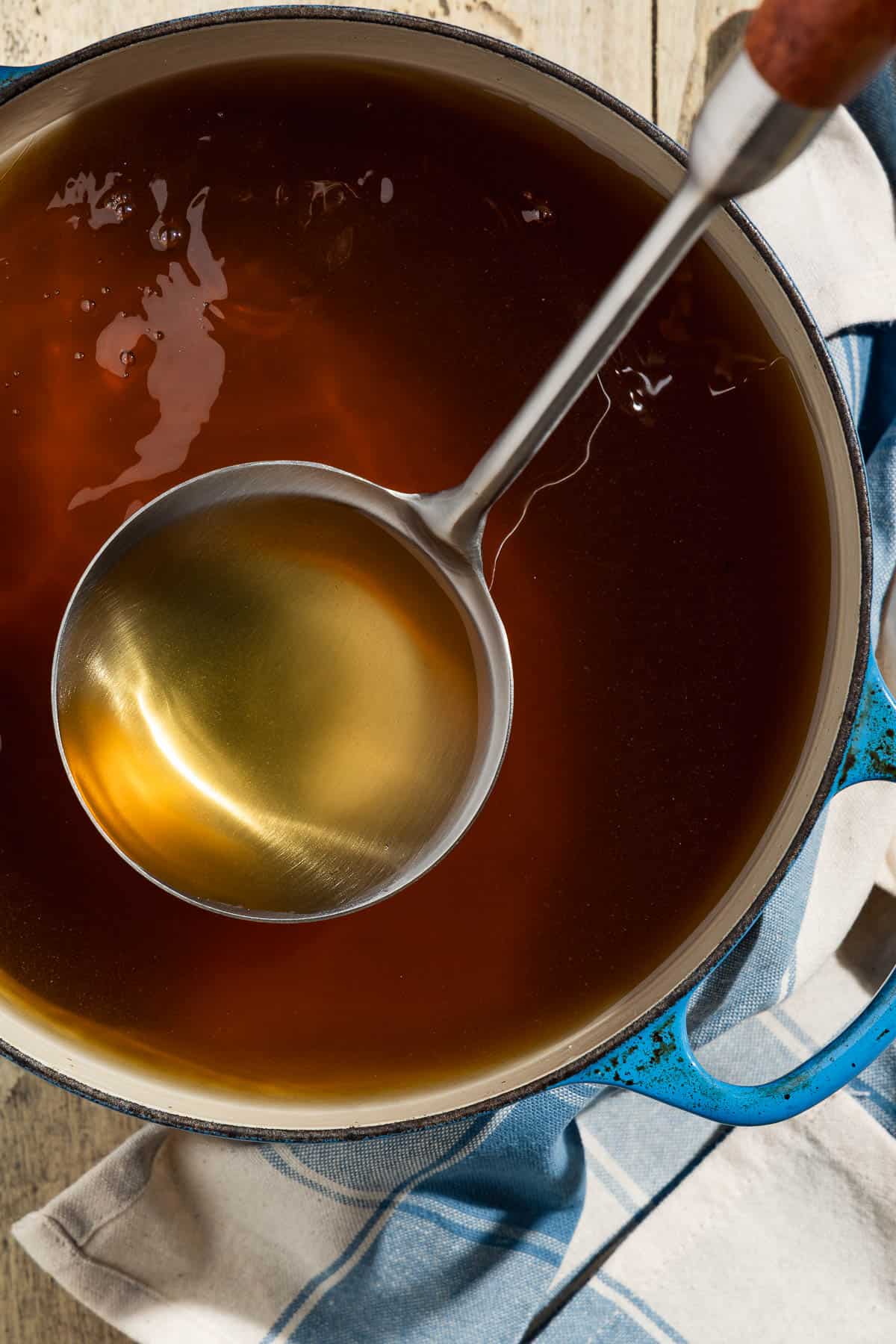
Why dried mushrooms? The drying process makes mushrooms richer and more flavorful than their fresh counterparts-think of the bright, sweet, caramelized flavor of sun-dried tomatoes compared with fresh.
I always include dried mushrooms in my vegetable broth to add a savory richness that you would otherwise get from chicken and other meats. You can use any variety of dried mushrooms or a blend. Some common types that should be easy to find are shiitake, porcini, oyster, or morel.
I will admit that dried mushrooms can be expensive. I’ve found that dried shiitake tends to be the most affordable. While you can find them in your grocery store, you may be able to find them cheaper in specialty Asian or European grocery stores or online. When I can get them cheaply, I use a full ounce, but half an ounce will provide plenty of flavor as well.
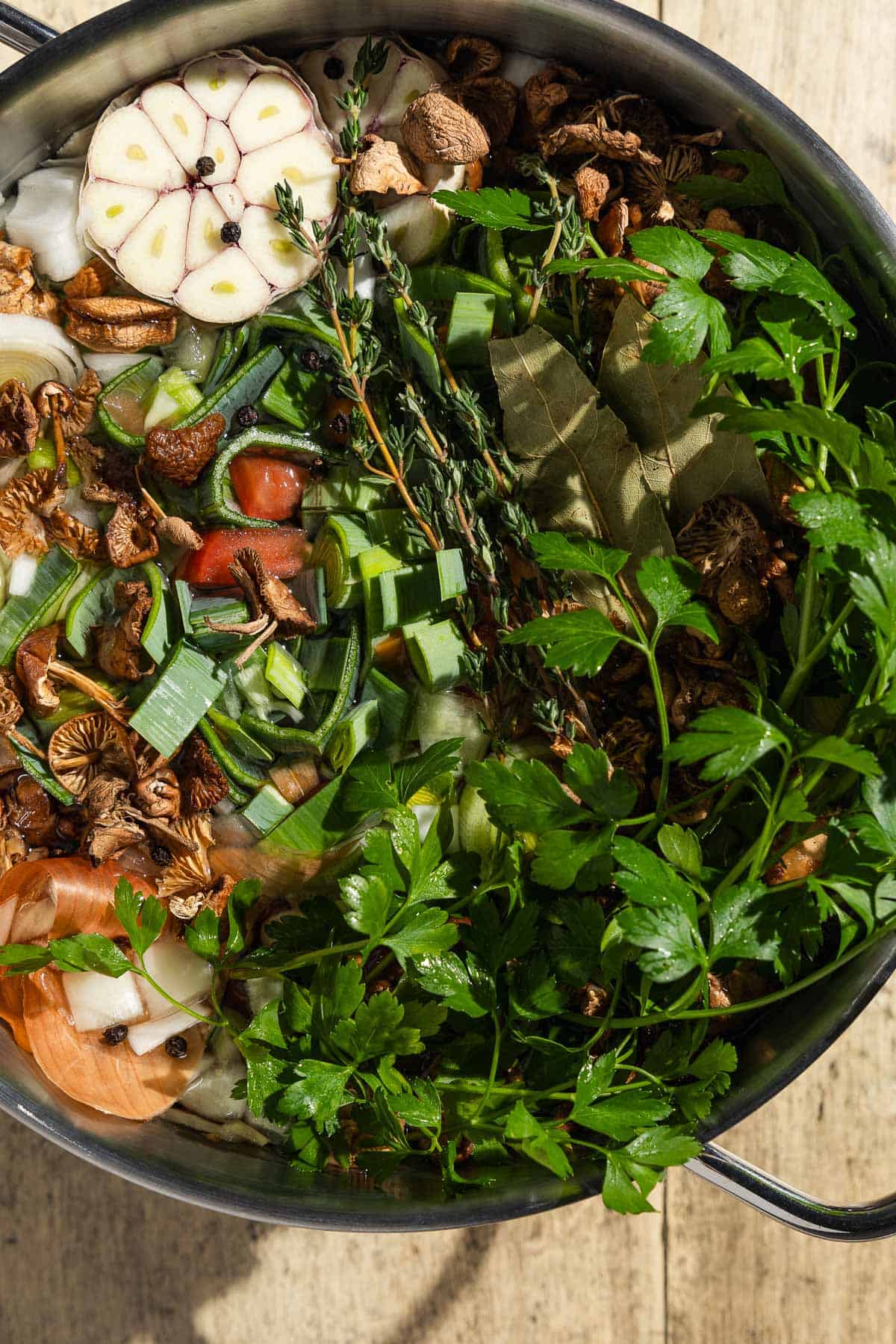
The vegetables I listed for this vegetable broth recipe are my reliable choices for a flavorful, all-purpose stock. But many other vegetables, herbs, and spices can be added to get the flavor you're after.
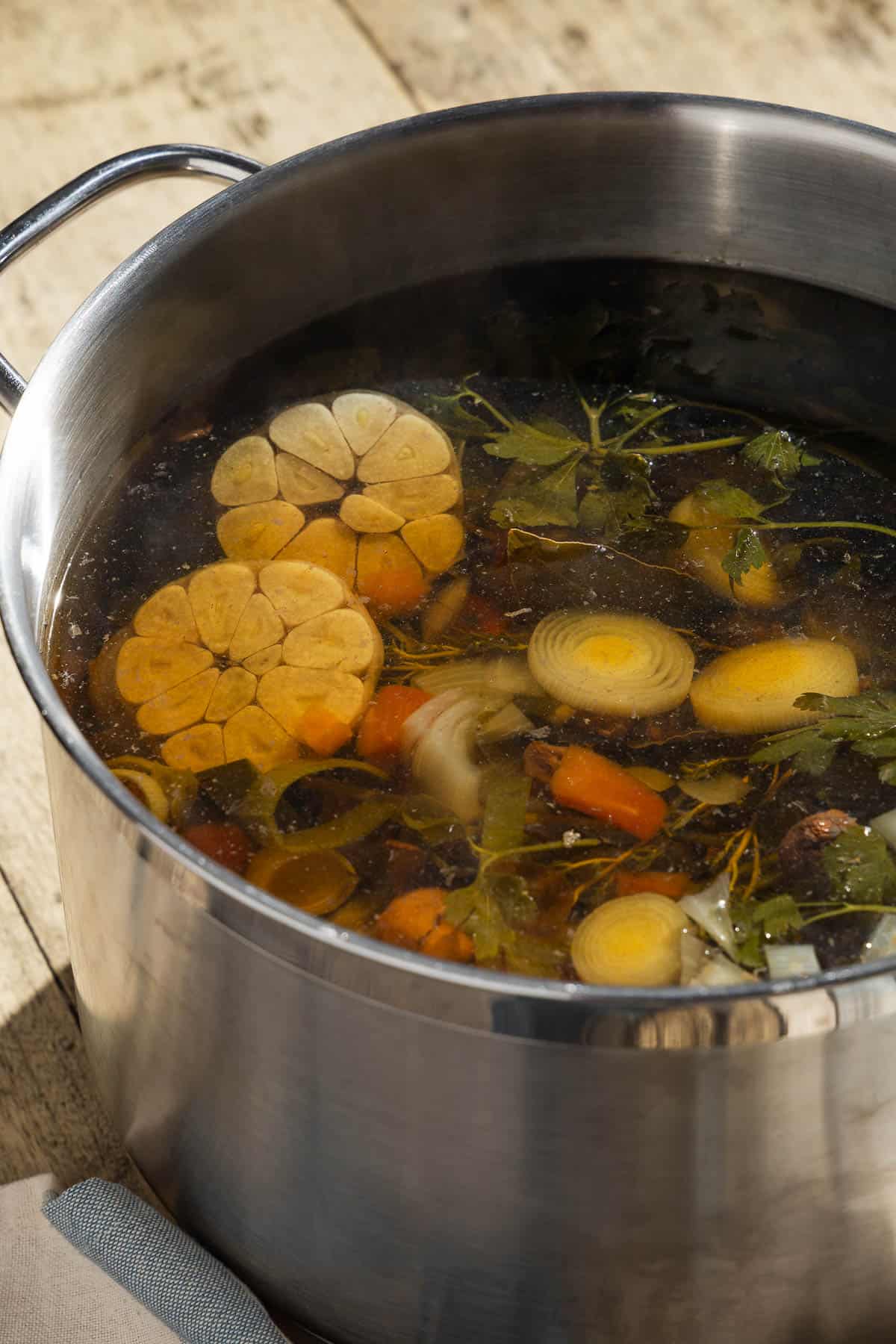
Avoid using vegetables that are bitter or overwhelming in flavor or color, that cloud the stock, or that don’t release any flavor. Generally, that means avoiding:
I usually make stock on a relaxing weekend, but since it only has to simmer for 45 minutes, I sometimes make it in the evenings and leave it to gently bubble in the background while I work on something else.
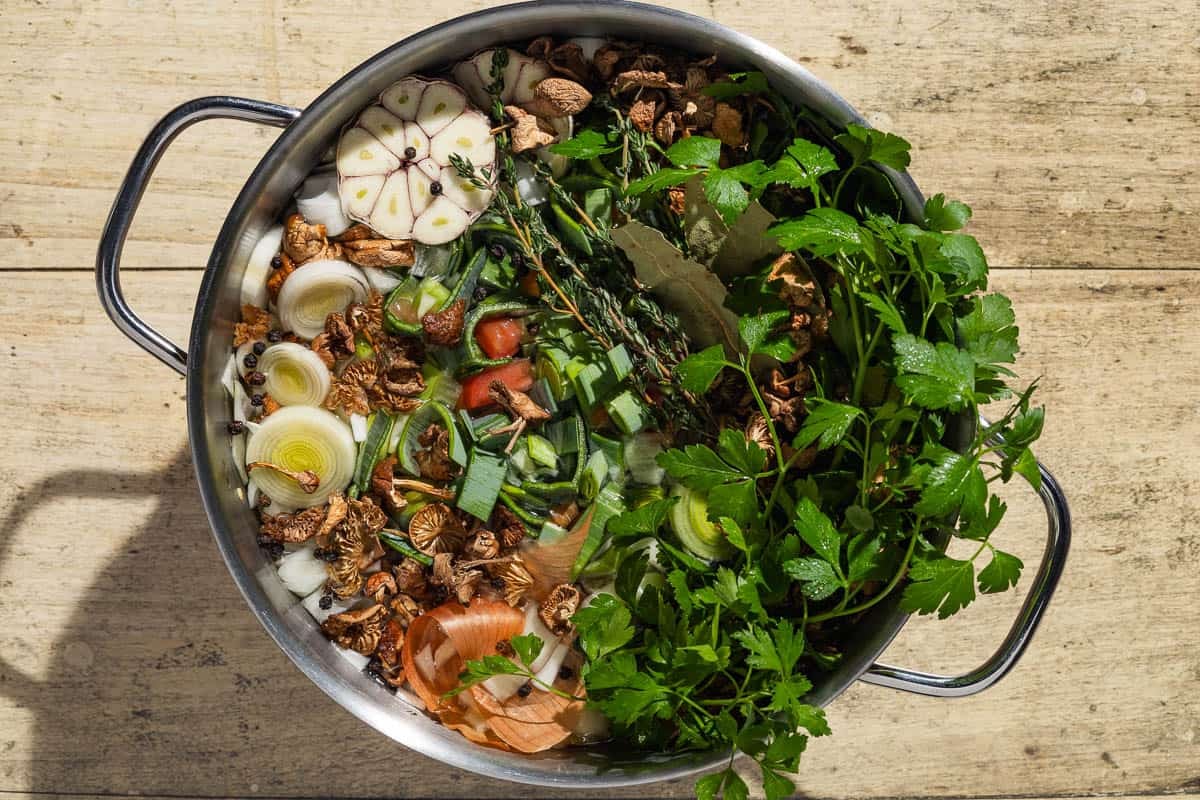
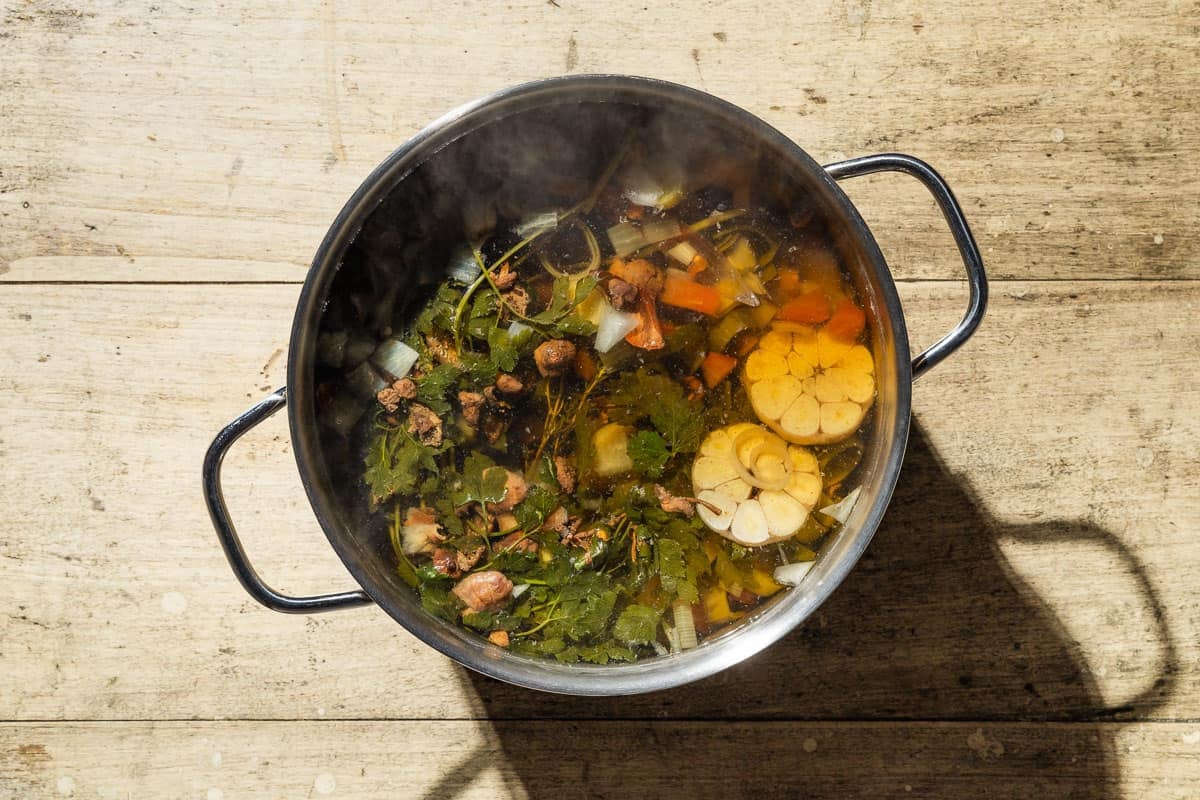
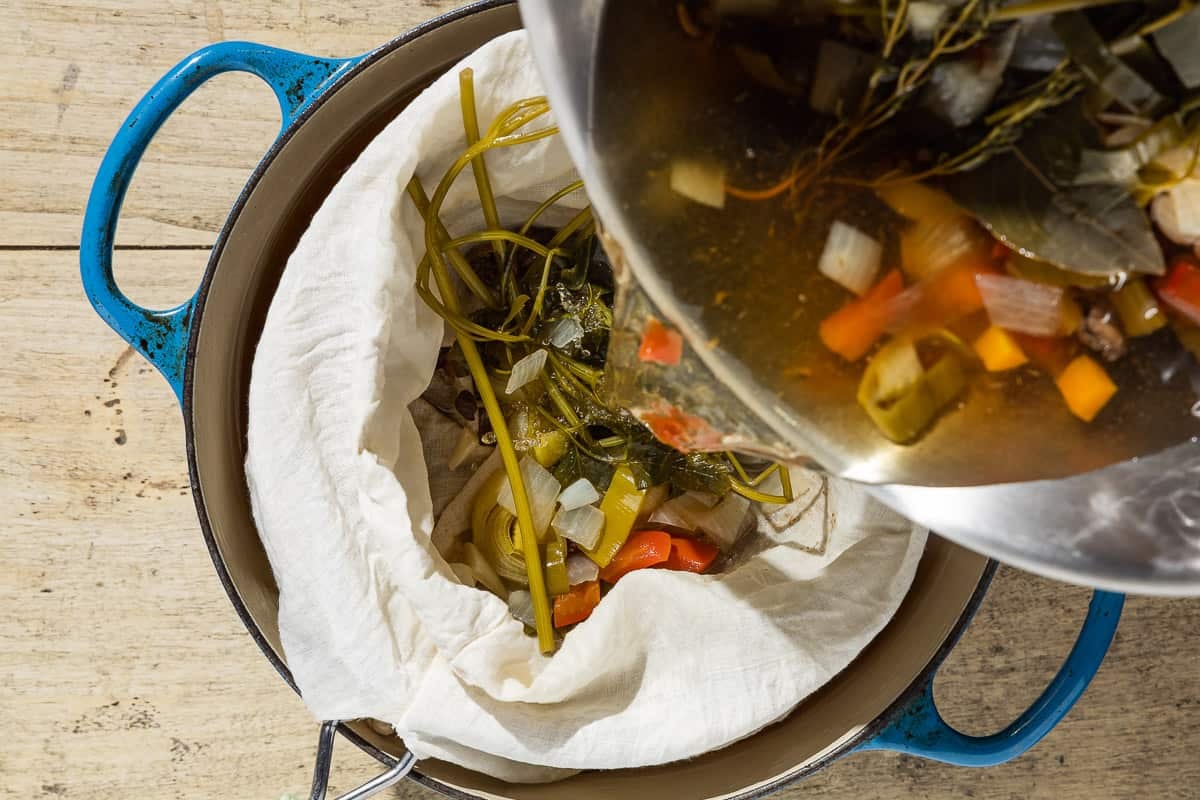
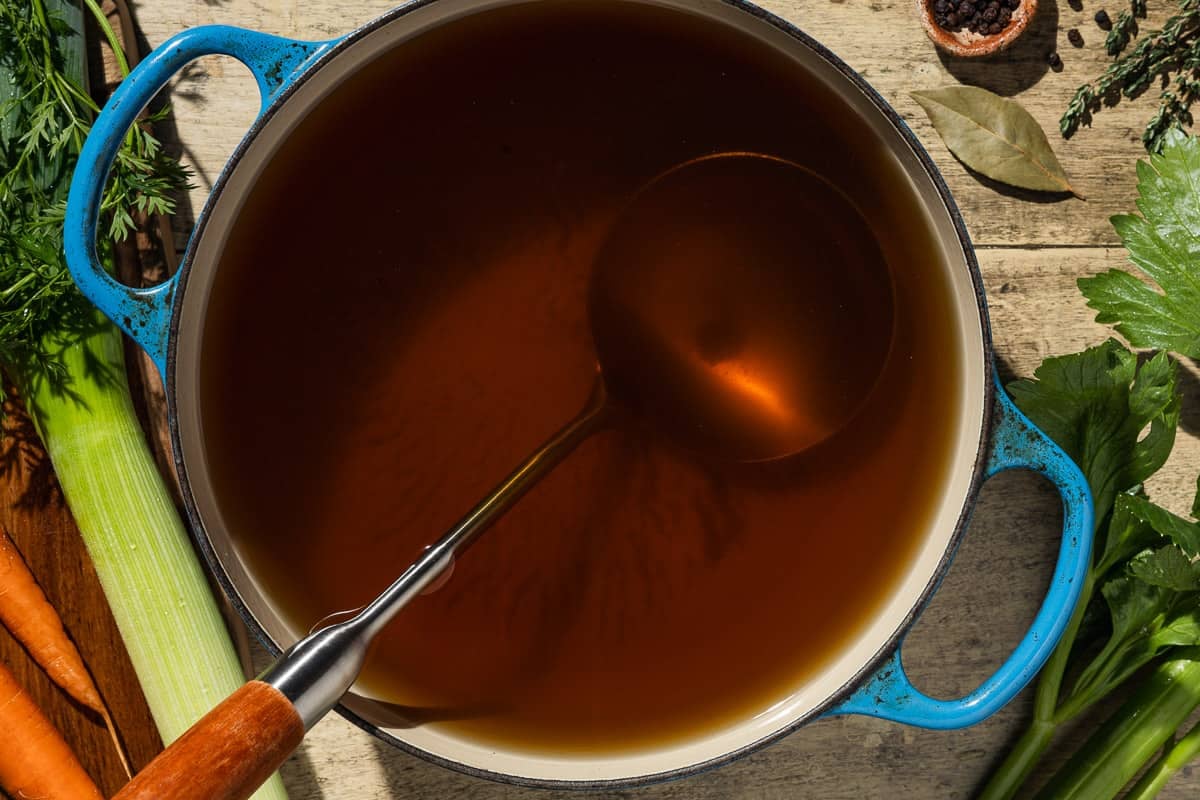
Roasting the vegetables gives a deeply colored vegetable stock full of caramelized flavor that’s perfect for richer dishes. To do so:
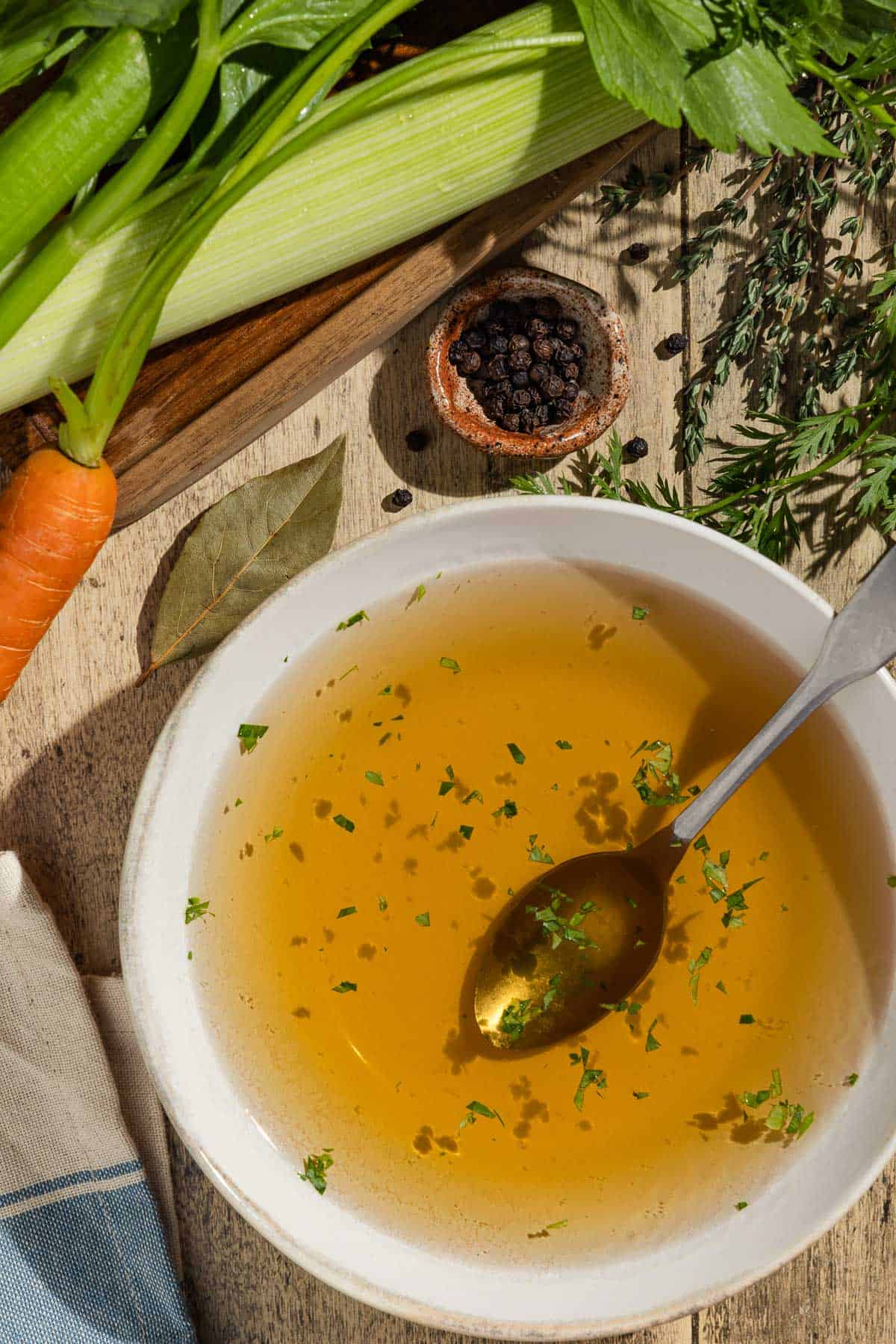
I'm lucky to have curbside compost collection in my city and have been feeling better about how my food waste is put to use. But whether or not you have the space for or access to composting, there’s still plenty of flavor that can be unleashed from many of those food scraps before tossing them.
I keep a zip-top bag in the freezer that I fill with kitchen scraps to save for making this vegetable broth recipe, dumping the contents of the bag into the simmering stock for the last 15 minutes. Because they’re small, thin pieces that have been frozen and thawed, they break down quickly, so I don't add them at the beginning.
You can save scraps from any of the vegetables in the ingredient list or the list of add-ins. For example, save carrot peels, tips, and tops, onion roots and skins, garlic skins, celery ends, mushroom stems, parsley stems, and leek roots and greens.
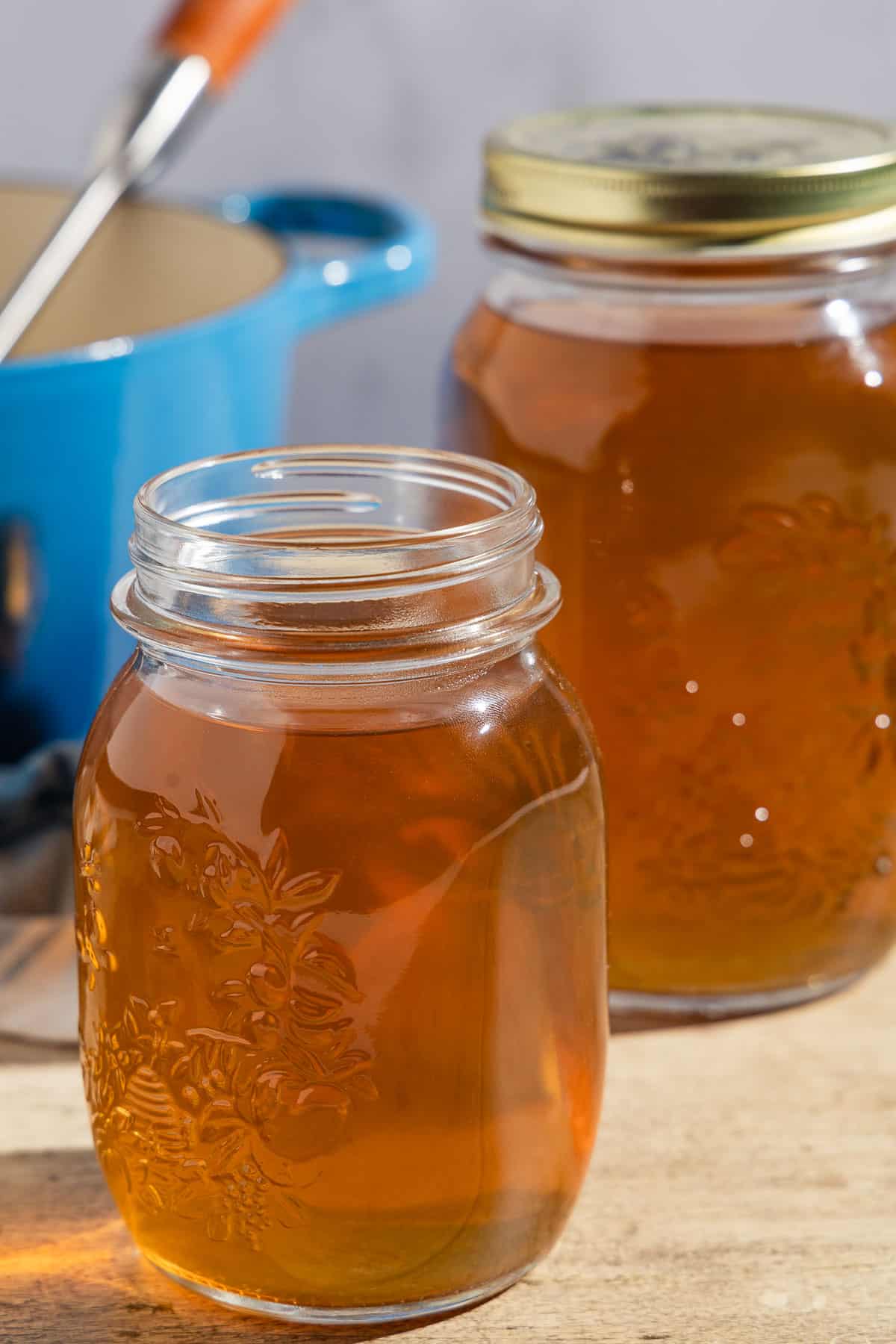
Every time I make stock, I store a jar in my fridge to use within the week. What remains goes in my freezer so that I can thaw as needed.
The stock will keep in the refrigerator for up to 1 week, or in the freezer for up to 4 months. I like to freeze it pre-measured in a volume that I use often, for example, 1 or 2 cups. A few things to remember:
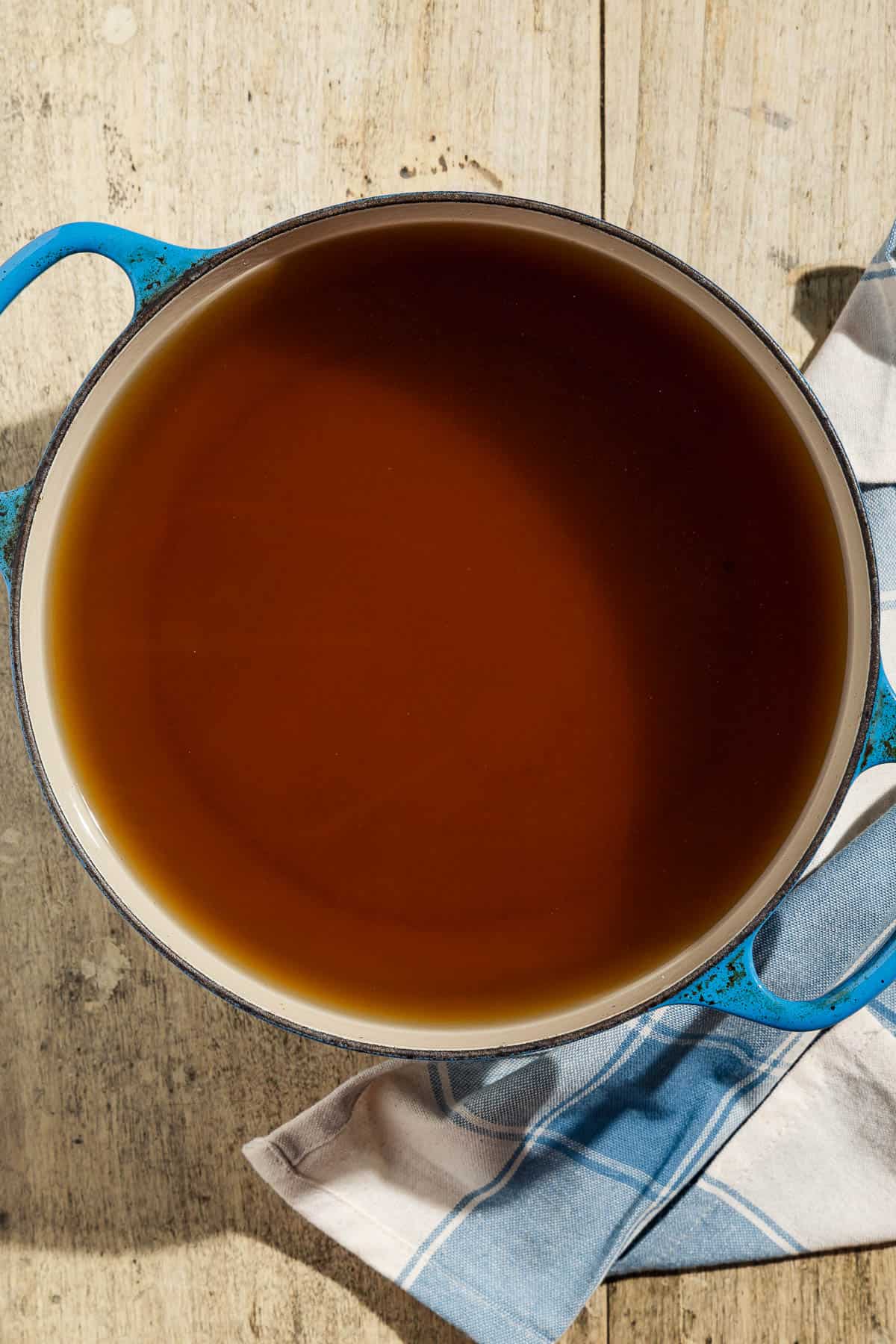
You can use this vegetable broth recipe just as you would chicken stock-and in many cases for savory recipes, just as you would water for an added flavor-boost. Here are some go-tos:

Soups and Stews
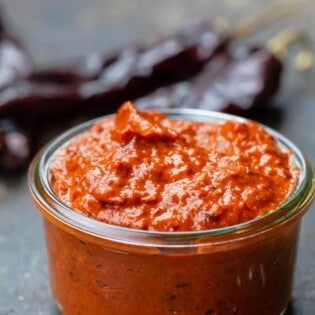
Dips and Condiments
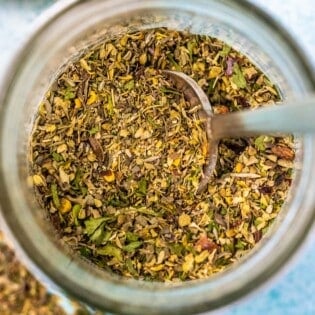
Italian
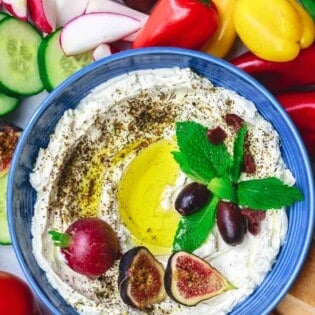
Appetizer and Mezze
Browse all Mediterranean recipes.
Visit Our Shop.
Stock your pantry with the essentials to eat the Mediterranean way, including Greek olive oil, 7 spices, and tahini.
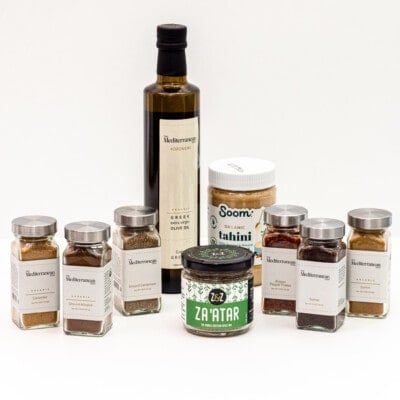

The post How to Make Vegetable Broth appeared first on The Mediterranean Dish.
By: Mark BeahmMediterranean living is a lifestyle that emphasizes healthy, nutritious food choices and regular exercise. This diet emphasizes fruits and vegetables, whole grains and legumes, as well as healthy fats like olive oil and nuts. There is also a moderate amount of dairy products, fish and meat. Red wine is encouraged in moderation. The main principles of the Mediterranean diet include:
Yes, you can adapt the Mediterranean Diet to be gluten-free. Whole-grain carbohydrates like wheat and barley can be replaced by gluten-free grains like millet or quinoa. Additional gluten-free options include fruits like melon, pears and fresh vegetables as well as legumes, nuts, seeds and nuts. Individuals with gluten intolerance to milk or dairy may benefit by choosing lactosefree products. For example, porridge can be substituted for oats and baked salmon with potatoes or bean soup as lunch. You could also roast vegetables with herbs for dinner.
Yes, milk in the Mediterranean diet is allowed. The Mediterranean diet is rich in dairy products, such as low-fat yogurts and cheese. These products provide calcium and other key nutrients. Milk is also nutritious and should be included in moderation as a drink in your daily routine, along with other beverages like coffee and tea. You can also make your own smoothies or oatmeal with it. When shopping for milk, make sure to choose organic varieties. This will encourage sustainable farming and promote more sustainable agriculture. To ensure a balanced start, you can add milk into breakfast items such as avocado toast or smoothies.
It is possible to lose weight by following the Mediterranean Diet. Because the diet focuses on whole foods like vegetables, fruits, legumes, and olive oil, it can reduce calories and provide vital nutrients for your overall health and well-being. To help lose weight, you can incorporate physical activity into your eating habits. Additionally, reducing highly processed foods, red meat consumption, and added sugars can help maintain a healthy weight over time if paired with the right mindset!
It is possible to have moderate amounts of alcohol as part the Mediterranean diet. Limit your alcohol intake to one glass per day for women and two for men. Drinks that are suitable include beer, dry wines, and spirits made from natural ingredients, such as vodka, whiskey, brandy, and gin. Due to the high sugar content of heavy spirits such as cocktails, they should be avoided. Additionally, incorporating daily doses of fluids such as water or herbal teas can keep the body hydrated and help reduce cravings for sugary drinks!
The Mediterranean Diet is a good choice for those with diabetes. This diet is based on whole foods, focuses on healthy fats instead of butter or lard, and minimizes refined sugars and carbs. This helps reduce the risk of developing diabetes in those not yet living with it and controls blood sugar levels for individuals with diabetes. Additionally, incorporating light physical activity into this eating style can help regulate and stabilize blood sugar levels with regular exercise! Healthy food options such as switching white bread to whole-grain bread or substituting nuts for crackers in salads can help to create a balanced meal plan that is suitable for managing many health conditions.
Mediterranean diets allow rice but encourage it. This diet emphasizes fruits, vegetables whole grains, legumes healthy fats such olive oil, nuts, dairy products, fish, meat, poultry, and moderate amounts of dairy products. Whole-grain brown rice is an excellent source of carbohydrate and provides energy. It is also a great source of dietary fibre, which can improve digestion and provide vital nutrients such as iron and B vitamins. You can add rice to soups, stews, or salads. When eating rice-based dishes, it is important to limit the amount of fat.
The Mediterranean Diet, a dietary pattern that emphasizes healthy fats. Whole grains, legumes, fresh fruit and vegetables are all part of the Mediterranean Diet. It has been linked to numerous potential health benefits, including better blood lipids, improved glucose control, reduced risk for depression and certain types of cancer, better cardiac health, enhanced cognitive function, and improved weight management. Adopting a Mediterranean diet can be made simpler with some tips. First, stop eating high-calorie snacks, such as chips, and start eating nutrient rich vegetables instead. Second, you can increase the variety of your diet by using spices and other sources made from fruits, vegetables, and nuts. Incorporate grains, legumes, as well as high-fiber products to increase satisfaction after meals. These steps will enable you to enjoy your food while also achieving a healthier lifestyle that may lead to additional health benefits such a longer lifespan, better quality of life, and greater enjoyment.
 |
[TAG55]Healthline ranked the Mediterranean Diet number 1 for the following reasons: Numerous studies associate the Mediterranean diet with a reduced risk of heart |
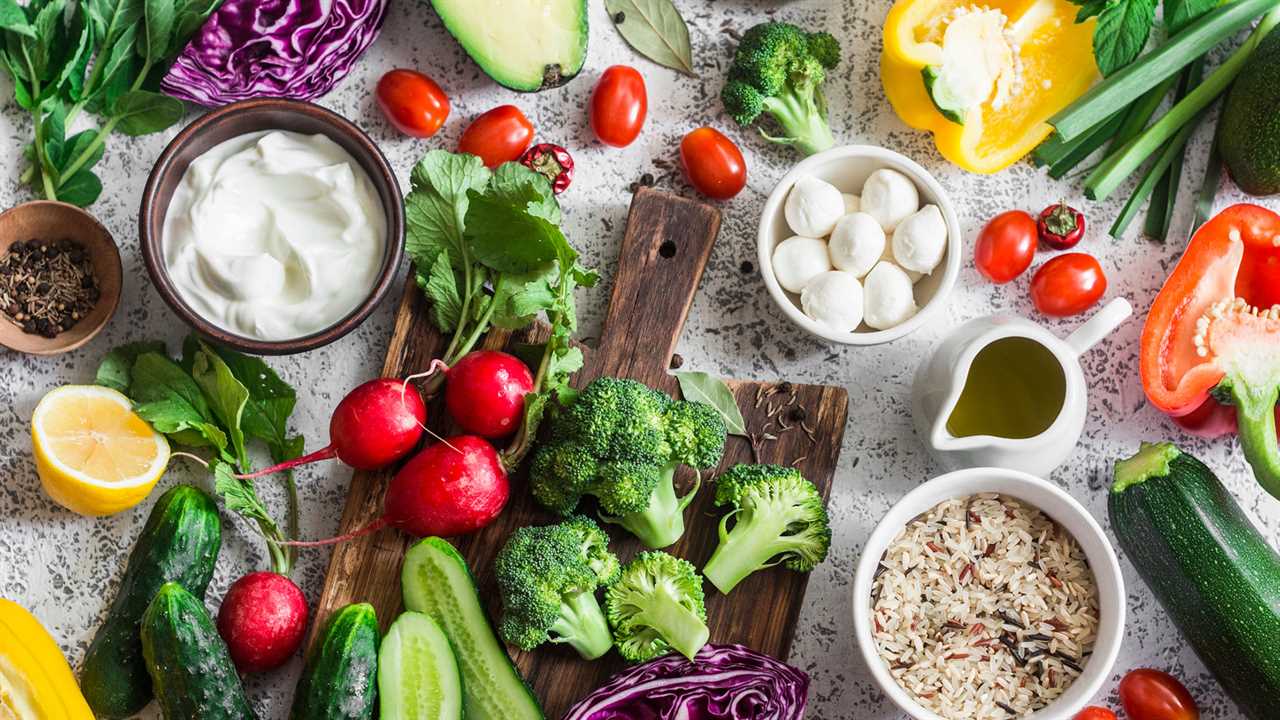 |
[TAG56]The Mediterranean diet originates in the food cultures of ancient civilizations which developed around the Mediterranean Basin and is based on the regular |
 |
[TAG57]Psychology Today reports: Eating more green, leafy vegetables and less red meat were associated with improved cognitive functioning in a recent study of older |
 |
[TAG58]This review of five human studies on the Mediterranean diet examines its effects on weight loss, various diseases, and the risk of death. |
 |
[TAG59]CNBC reports that Joan Salge Blake, Boston University’s clinical professor of nutrition says: “‘Poor protein [intake] can contribute to fatigue, and that’s the |
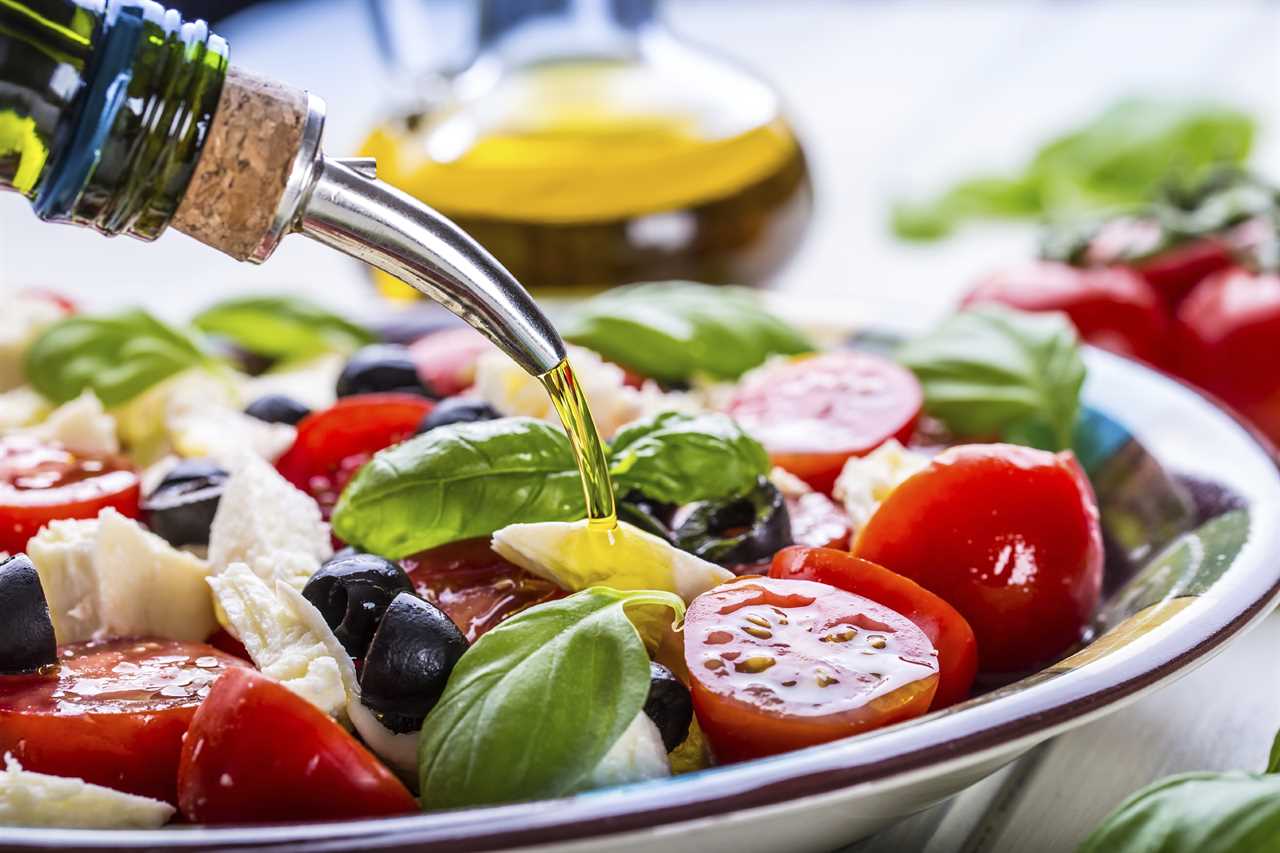 |
[TAG60]The Mediterranean diet has been linked to a number of health benefits, including reduced mortality risk and lower incidence of cardiovascular disease. |
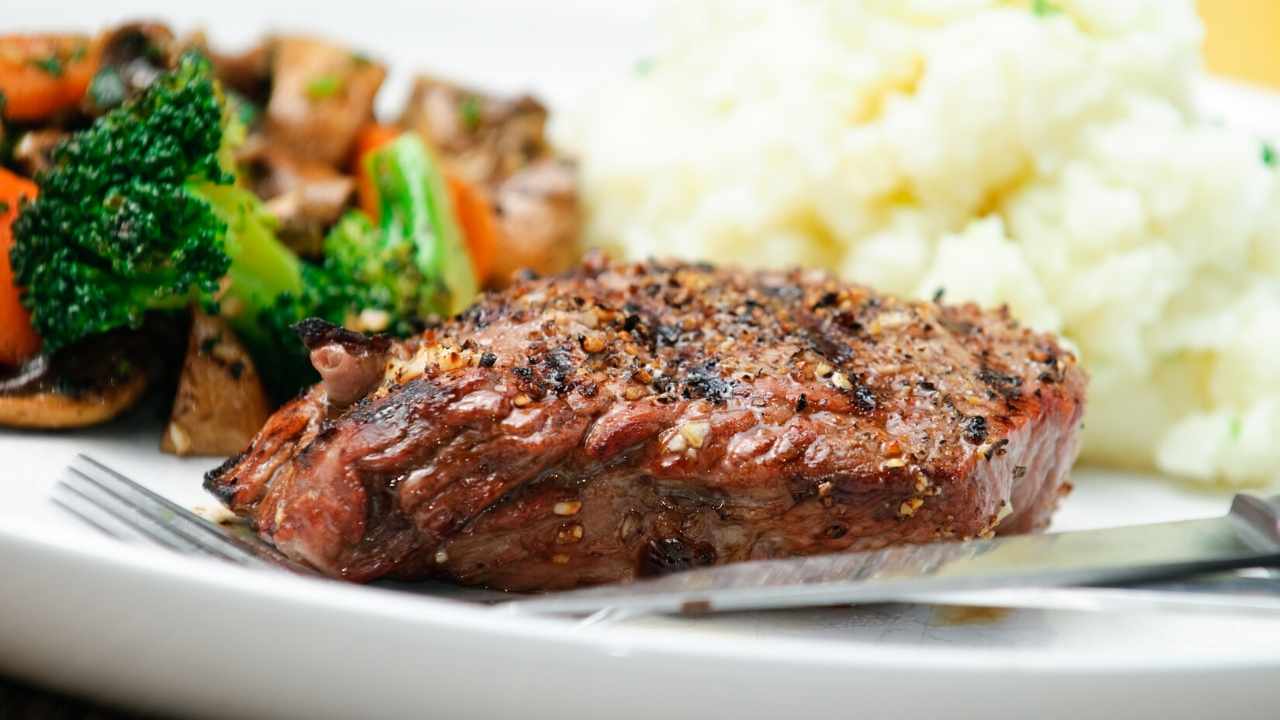 |
[TAG61]According to Olive Oil Times: The authors of the meta-study, published in Current Obesity Reports, noted that hypertension, type 2 diabetes mellitus, several |
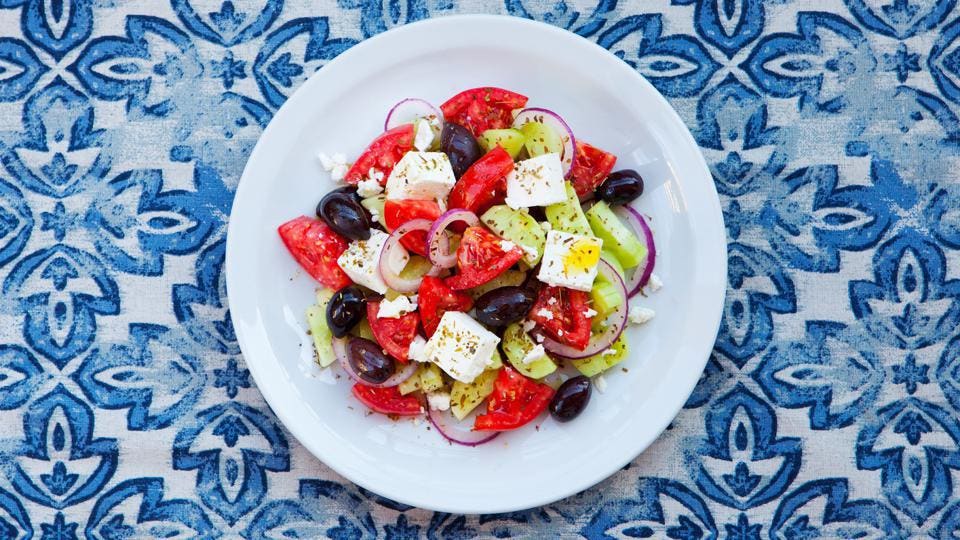 |
[TAG62]The Mediterranean diet, with its emphasis on fresh vegetables and fruit, whole grains, legumes, olive oil and fish, provides an array of health benefits, |
 |
[TAG63]The study described in The Epoch Times found: In the conclusions of this study, the authors prefer the Mediterranean diet over the Keto diet because the key to |
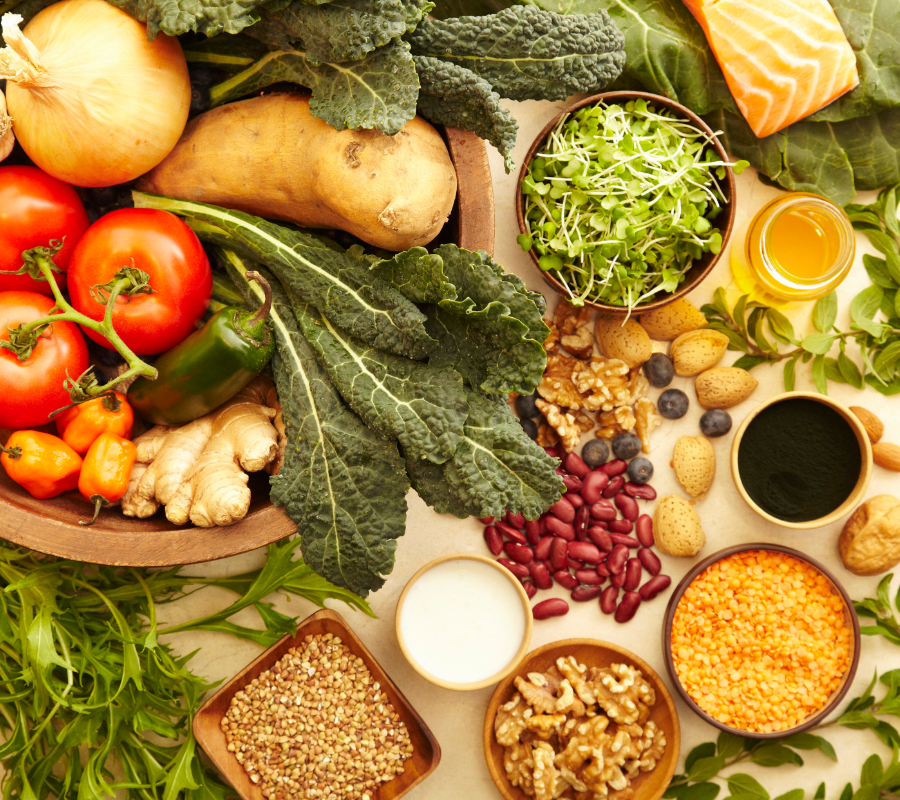 |
[TAG64]The Mediterranean diet is a heart-healthy eating plan that emphasizes healthy fats, whole grains, fruits, vegetables, beans, nuts and seeds. |
 |
[TAG65]If a Google search is any indication, these are the 12 most frequently asked questions that people have about the Mediterranean diet. And if you’re interested |
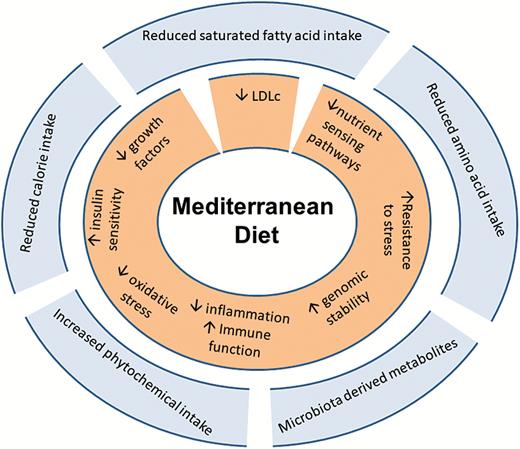 |
[TAG66]Abstract. Consuming a Mediterranean diet rich in minimally processed plant foods has been associated with a reduced risk of developing multiple chronic diseases |
 |
[TAG67]There’s new evidence that a Mediterranean diet can sharply reduce your chances of developing dementia even if you have a genetic risk for it. NBC medical |
 |
[TAG68]It’s an easy (and delicious!) change that can turn your diet into a disease-fighting tool. |
 |
[TAG69]Chair: Dr. Alexandros Haliassos, Maria Pagoni 3:05 pm - 3:25 pm Targeting molecular therapies to lung epithelial cytosols: targeted microbial exosome |
 |
[TAG70]There are many misconceptions about the Mediterranean diet. Learn what it really means and how it can help you live a healthier, longer life. |
 |
[TAG71]💡 Want to eat the #mediterraneandiet, but are not quite sure you how?? Then you're in the right place!! ⚡️ I've got you covered ⚡️ In this video, I'll |
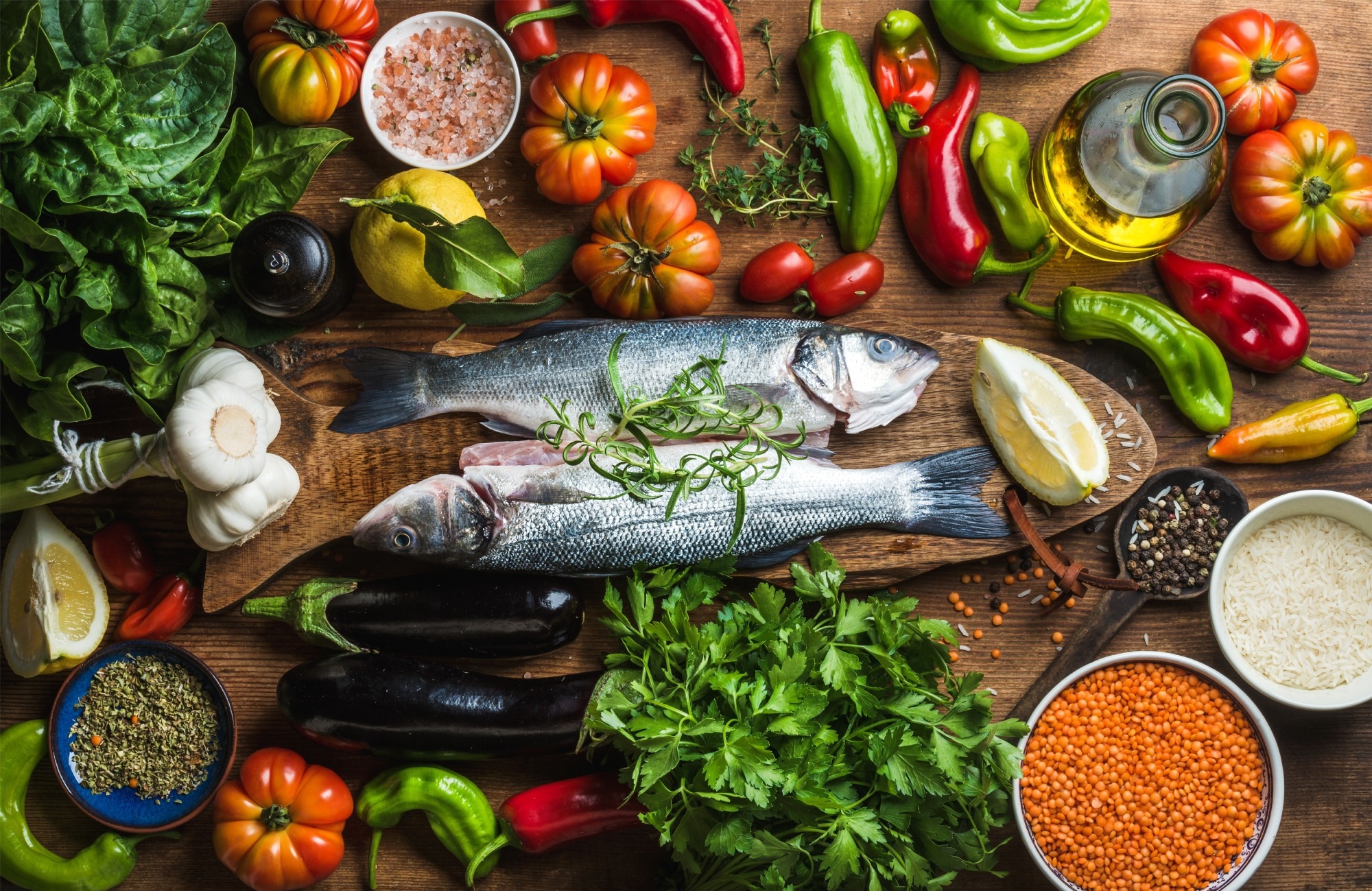 |
[TAG72]A review article published in the journal Experimental Gerontology describes the utility of Mediterranean diet (MedDiet) in the prevention and management of |
 |
[TAG73]In this video, we're going to explore the hidden truth about metabolic syndrome. We'll discuss the signs and symptoms of metabolic syndrome, and discuss the |
 |
[TAG74]How I was able to completely reverse my diabetes, go medication free, and how almost anyone can do the same with a blue-zone vegan lifestyle. Week 4 of my |
